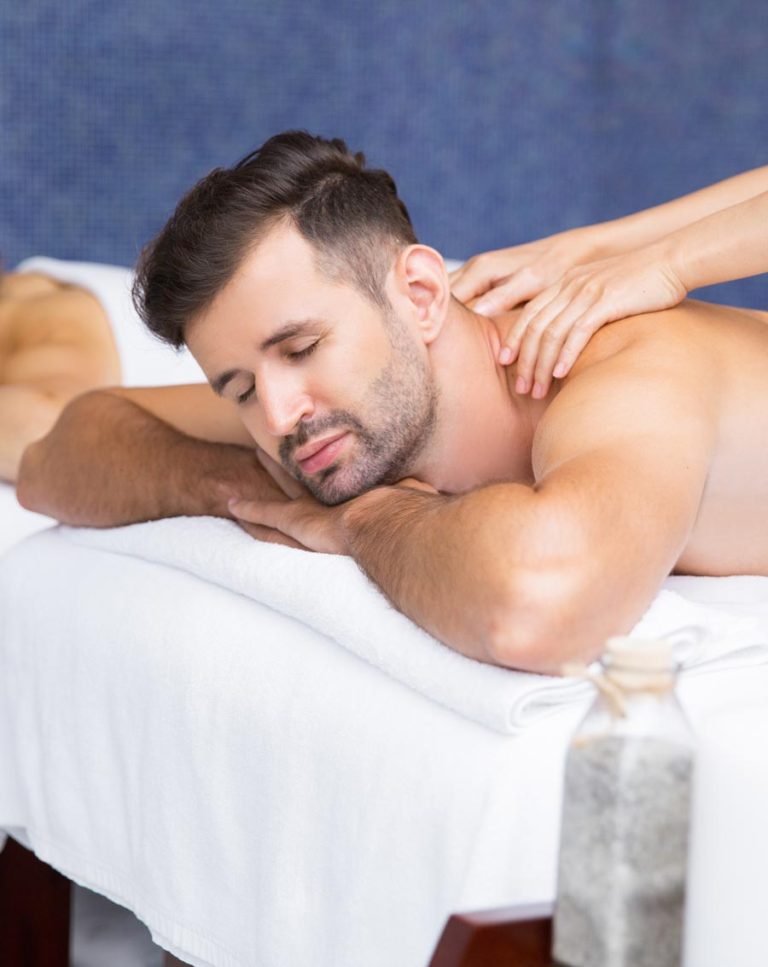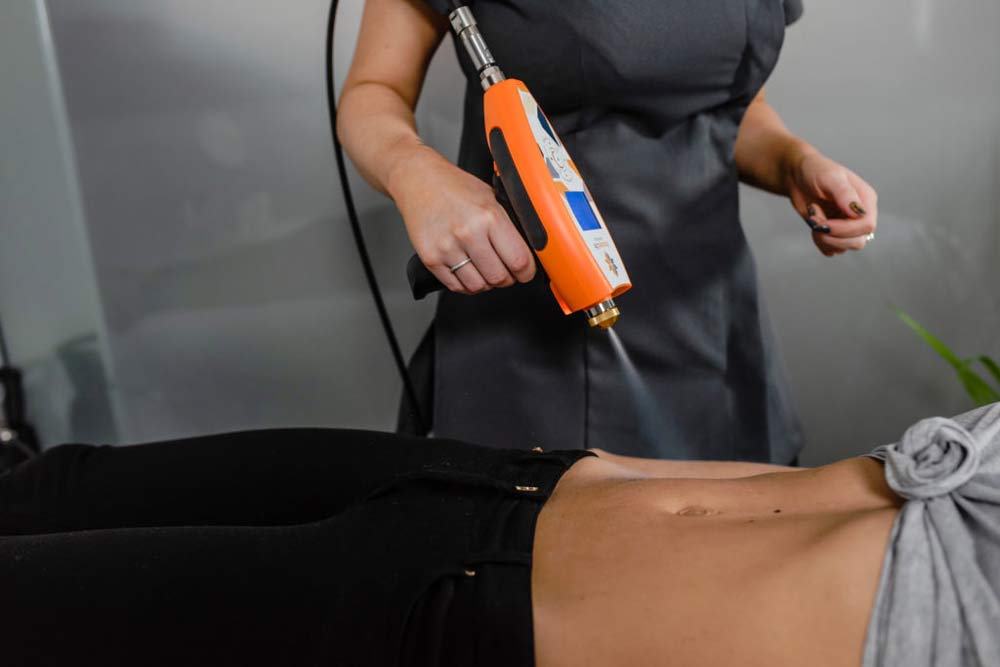Massage Therapy
Feel Great Inside and Out and enter a World of Peace and Renewal
What do we offer for massage therapy?
Usually an hour long Massage concentrates on finding the source of your discomfort and focuses on treating the affected tissues, as well as the surrounding muscles. After a deep warm up, different techniques are used to break down adhesions and areas of tension. This massage can be adapted to encompass different areas of the body in one session and is tailor-made to suit your requirements.
After a short consultation your therapist will decide which therapy is best suited for your needs.
Massage therapies are ideal for people suffering from low back pain, limited mobility, recovery from injuries (e.g. whiplash, falls), repetitive strain injury, such as carpal tunnel syndrome, postural problems, muscle tension in the hamstrings, glutes, IT band, legs, quadriceps, rhomboids, upper back, osteoarthritis pain, sciatica, sports concerns (runners, athletes), piriformis syndrome, tennis elbow, fibromyalgia, upper back or neck pain

Aches, Pains & Injuries We Can Help With
Sports pain and injuries
Joint pain and stiffness
Relaxation and wellness
Massage Therapies We Offer
Swedish massage is helpful in reducing pain, joint stiffness, and improving function in patients with osteoarthritis.
Swedish massage’s main focus is relaxation through the use of different types of massage techniques. The five basic strokes are effleurage (sliding or gliding), petrissage (kneading), tapotement (rhythmic tapping), friction (cross fibre) and vibration/shaking.
Deep Tissue Massage, as its name says, focuses on the deeper layers of muscle tissue. It is designed to reach the deep sections of thick muscles, specifically the individual muscle fibres.
Using deep muscle compression and friction along the grain of the muscle, the purpose of Deep Tissue Massage is to unstick the fibres of the muscles and release both toxins and deeply held tension points. Specific hand positions and strokes are used to respond to various tissues while breath and movement techniques are employed to release muscular congestion. It helps to loosen muscle tissues, release toxins from muscles and get blood and oxygen circulating properly. It is both corrective and therapeutic. It is beneficial for many physical problems, including sports injuries and chronic pain. Because it works very deeply, emotional issues can also be addressed, when these have been stored in the body.
Treatments take place on a massage table on bare skin. Deep Tissue Massage usually focuses on specific areas and may cause some soreness during or after the session. If the massage is done correctly however, you should feel better within a day or two. Water helps to eliminate toxins from the body so it is important to drink plenty of water after a Deep Tissue Massage to help this process along.
Sports therapy is used for the treatment of pain, injury and dysfunction of the musculoskeletal system arising from recreational and competitive sports, as well as the demands of work and postural stress.
A Sports therapist uses a variety of soft tissue and joint mobilisation techniques, including myofascial release, trigger point therapy, myofascial dry needling, and relaxation massage to ease daily stress levels. The treatment focuses on repairing the body physically and emotionally in order to achieve balance. It creates an optimum healing environment within the body; resulting in it becoming pain free and working at its peak performance.
It is also important, that whilst providing a high level of care, the sports therapist educates you on how to manage your injuries, aches and pains to prevent them from reoccurring.
Hot stone massage is an indulgent form of relaxation that incorporates smooth stones heated in water. These stones are placed along pressure points along the body. The penetrative heat affects the deep layers of tissue for a revitalising experience.
Hot stone massage is an ancient practice derived from traditional Chinese medicine. In the modern age, we often use heat to alleviate pain and discomfort, usually associated with cramps or other muscle afflictions. Hot stone massage therapy is a favourite wellness treatment for people around the globe.
Indian head massage incorporates various manipulation and acupressure techniques to stimulate the soft tissues on the upper back, shoulders, neck, scalp, head and face. Effleurage or circular massage strokes are used on the scalp, while kneading and stretching techniques are used on the neck and shoulders to release tension and increase muscle flexibility.
Aside from its physical benefits, this type of massage also helps on an emotional level such as calming the mind, promoting relaxation, and relieving stress.
Massaging the head helps improve oxygen supply to the brain which can help reduce stress. Oxygen is important as it helps you think more clearly and creatively. Indian head massage helps stimulate the hair follicles to loosen them up when the scalp is tense and tightened. This encourages healthy hair growth and promotes strong, shiny hair. Additionally, massaging the scalp, face, neck and shoulders offers the following benefits:
- Relieves eye strain
- Alleviates insomnia
- Eases headaches and migraines
- Relaxes the muscles
- Tones facial muscles
- Improves blood and lymphatic circulation
- Boosts the immune system
- Restores joint movement
- Relieves sinusitis
- Reduces stress
- Relieves anxiety
- Improves concentration
- Eliminates muscle tension
The basic principle of Reflexology is that congestion/tension in any part of the foot mirrors the congestion/tension in a corresponding body part.
These body parts or reflex points can also be found on the hands and other body parts, however, the most commonly treated area is the feet.
Reflexology may have many beneficial and lasting effects.
Some treatments aim to restore systems for better function while others are more specific, addressing particular conditions. It is a healing process that can be safely used when it is not convenient to treat other body parts.
Reflexology is a non-intrusive technique. It can be a relaxing therapy that works on many levels, soothing, calming, balancing and boosting the entire body.
Reflexology is used to treat a variety of conditions such as:
- Asthma
- Back, Neck and Shoulder pain
- Migraines
- Pre-menstrual syndrome and other menstrual irregulations
- Sciatica
- Sinus pain
MLD is a light massage used to increase Lymphatic flow, boost the immune system and promote healing and recovery of all kinds. Due to the wide range on benefits Lymphatic Therapy has on the human body and the importance of a well-functioning circulatory system, everybody will benefit from MLD treatment. However, this treatment is especially suited to those suffering from illnesses or whom have particular health goals in mind.
The techniques used in this massage act on the fat cells (adipocytes) and help them to detach from the tissues and be reabsorbed evenly. This massage has many health benefits for skin, connective tissues, muscular tissues and joints, circulatory and nervous system.
Who can benefit from Lymphatic Therapy?
- Post Cancer Sufferers
- Athletes
- Post Surgery Patients
- Pregnant women
- Varicose vein sufferers
- Those with swollen arms, legs or ankles
- Those who are feeling ‘sluggish or buffy’
- Those recovering from illness or surgery
- Those who stand for long periods
How can Lymphatic therapy help you?
• Increase lymphatic flow
• Improve cardiac circulation (swollen ankles due to poor venous return)
• Boost Immunity
• Reduce bruising
• Reduce inflammation
• Promotes recovery from surgery and injury
• Promotes recovery from illness
• Reduces congestion in the sinus
• Promotes recovery after exercise
• Improves comfort throughout pregnancy
• Reduces fatigue
Remedial massage is a deep massage. It is designed to increase the flow of blood and lymph, particularly in the injured areas. It creates the conditions for the body’s return to normal health after injury. Remedial massage is also used for lifestyle conditions such as repetitive strain injury and back pain. It works to heat muscles and tendons that are damaged, impaired or knotted. It holistically treats the whole body and traces the discomfort back to the original cause. It uses specialised techniques to support and speed up the body’s own repair mechanisms. The massage is applied directly to the skin usually with an oil lubricant. Passive stretching moves are also employed. Tenderness during the treatment indicates which muscles and tendons are injured. The massage therapist uses the patient’s feedback to pinpoint the damaged tissue and to regulate pressure. It is also referred to as Deep Tissue Massage.
Cryotherapy
A cryo massage will supercharge your healing and enhance your well being.
This treatment offers fast pain relief and has been shown to have significant benefits for a whole range.
The cold compress attachments are ideal for use as a massage compress. At -40°C (-40°F), the cool compresses provide a soothing and effective therapeutic modality for relaxing and softening tight muscles.


Massage therapy FAQ’s
Your massage therapist may require you to fill out a health history form. Afterward the therapist will begin by asking you general questions to establish what areas you would like worked on, if there are any conditions needing to be addressed, and to determine if massage is appropriate for you. It is important to list all health concerns and medications so the therapist can adapt the session to your specific needs without doing any harm. It is also important to list any allergies so the therapist is aware if he/she needs to use a different oil or lotion during the session.
If you are just looking for some occasional relaxation, then a session every 3-6 weeks may be fine for you. However, if you are looking to address a specific condition, then it is recommended to go more frequently at first and then slowly taper down to a maintenance schedule. Sometimes more frequent 30-minute sessions can be effective until your goals are met and a maintenance schedule is in place. Frequency of sessions should be discussed with your massage therapist after your treatment when he/she has a better hands-on understanding of your particular muscular issues.
The average full-body massage treatment lasts approximately one hour. A half-hour appointment only allows time for a partial massage session, such as neck and shoulders, back or legs and feet. Many people prefer a 60 to 90-minute session for optimal relaxation. Always allow relaxation time prior to and after the session.
Book your consultation
or Call 0121 608 5213

SIGN UP FOR
NEWS & OFFERS
VIP MEMBERS
BECOME A VIP MEMBER AND SAVE £’s ON TREATMENTS AND PRODUCTS

Safety List
- We do not proceed with treatment until you are fully informed
- All clinics are licensed, insured & regulated
- We only recruit pactitioners with over 3 years industry experience
- FDA approved machines, cutting edge technology
Testimonials




